Search Result
Results for "
U937
" in MedChemExpress (MCE) Product Catalog:
1
Biochemical Assay Reagents
2
Isotope-Labeled Compounds
| Cat. No. |
Product Name |
Target |
Research Areas |
Chemical Structure |
-
- HY-100688
-
|
|
Dihydroorotate Dehydrogenase
|
Cancer
|
|
ML390 is a potent dihydroorotate dehydrogenase (DHODH) inhibitor. ML390 is an inducer of myeloid differentiation and causes myeloid differentiation in murine (ER-HoxA9) and human (U937 and THP1) acute myeloid leukemia (AML) models .
|
-
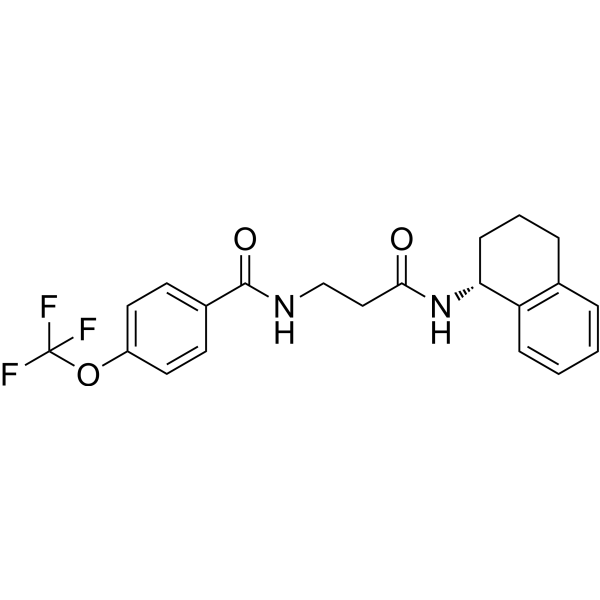
-
- HY-143727
-
|
|
RIP kinase
|
Inflammation/Immunology
|
|
RIPK1-IN-9 (example 45), a dihydronaphthyridone compound, is a potent and selective RIPK1 inhibitor. RIPK1-IN-9 inhibits U937 cell (IC50=2 nM) and L929 cell (IC50=1.3 nM) .
|
-
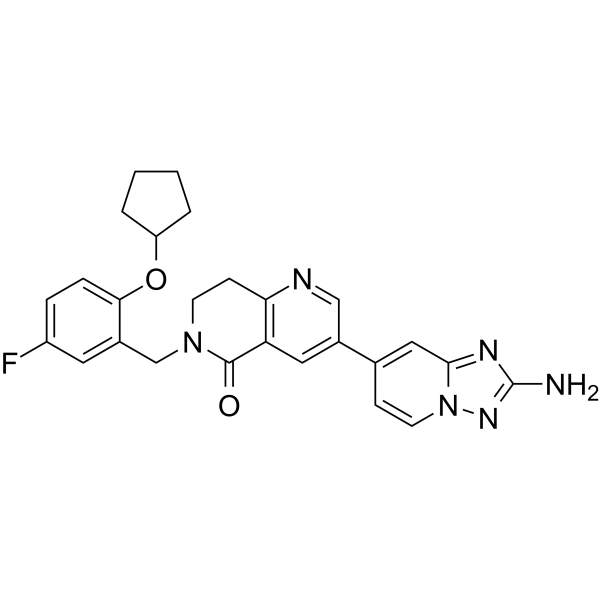
-
- HY-146581
-
|
|
Cathepsin
|
Inflammation/Immunology
|
|
Cathepsin C-IN-4 (compound SF27) is a potent Cathepsin C (Cat C) inhibitor, with an IC50 of 65.6 nM. Cathepsin C-IN-4 also inhibits THP-1 and U937 cell, with IC50 values of 203.4 and 177.6 nM, respectively .
|
-

-
- HY-146580
-
|
|
Cathepsin
|
Inflammation/Immunology
|
|
Cathepsin C-IN-3 (compound SF11) is a potent Cathepsin C (Cat C) inhibitor, with an IC50 of 61.79 nM. Cathepsin C-IN-3 also inhibits THP-1 and U937 cell, with IC50 values of 101.5 and 86.5 nM, respectively .
|
-
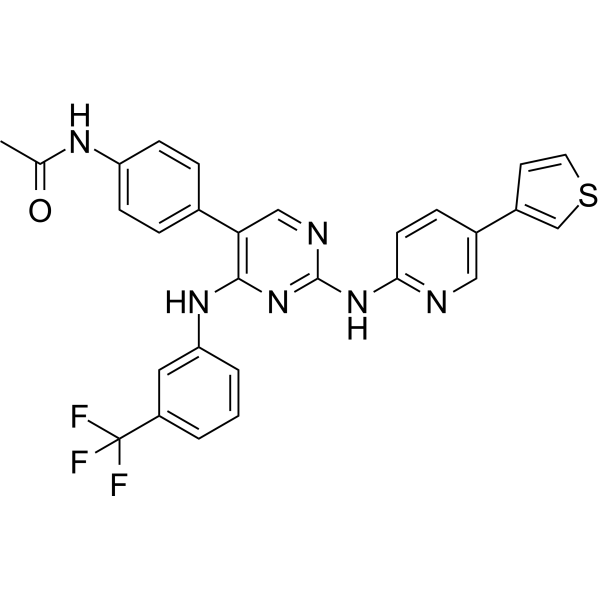
-
- HY-149470
-
|
|
Histone Acetyltransferase
|
Cancer
|
|
MOZ-IN-3 (Compound 6j) is a KAT6A (MOZ) acetyltransferase inhibitor (IC50: 30 nM). MOZ-IN-3 has antitumor activity against four different myeloid leukemia cell lines (HL-60, U937, SKNO-1, K562). MOZ-IN-3 has favorable metabolic stability and pharmacokinetics .
|
-

-
- HY-162237
-
|
|
RIP kinase
|
Inflammation/Immunology
|
|
RIPK1-IN-13 (compound 28) is a selective inhibitor for receptor-interacting serine/threonine-protein kinase 1 (RIPK1), the inhibitory activity is measured by ADP-Glo Kinase Assay with a pKi of 7.66. RIPK1-IN-13 inhibits human leukaemia cells U937 with a pIC50 of 7.2 .
|
-

-
- HY-151132
-
|
IsoQC-IN-1
|
Others
|
Cancer
|
|
Glutaminyl cyclases-IN-1 (IsoQC-IN-1) is a potent glutaminyl cyclases (QC) inhibitor with IC50 values of 12 nM and 73 nM for human QC and isoQC, respectively. Glutaminyl cyclases-IN-1 can selectively interfere with the interaction of CD47/SIRPα through isoQC inhibition, and enhances the increased phagocytic activity of both THP-1 and U937 macrophages .
|
-
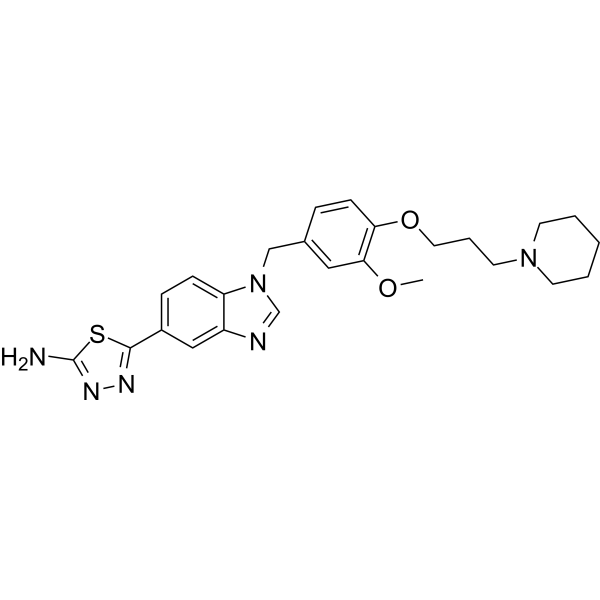
-
- HY-146758
-
-

-
- HY-13249
-
|
1α-Hydroxy vitamin D4
|
VD/VDR
|
Cancer
|
|
1alpha-Hydroxy VD4 , a 1alpha(OH)D derivative, can effectively induce the differentiation of monoblastic leukaemia U937, P39/TSU and P31/FUJ cells.
|
-
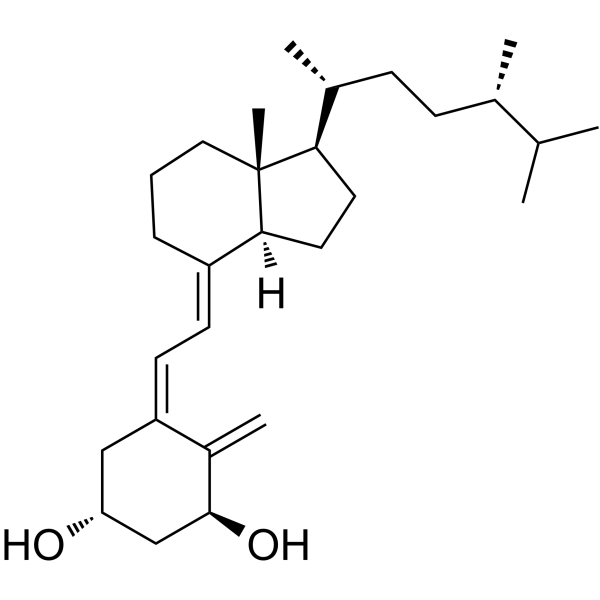
-
- HY-106784
-
|
|
Fungal
Apoptosis
|
Infection
Cancer
|
|
Ajoene, a garlic-derived compound, is an antithrombotic and antifungal agent. Ajoene inhibits proliferation and induces apoptosis of human leukaemia CD34-negative cells including HL-60, U937, HEL and OCIM-I. Anticancer activities .
|
-
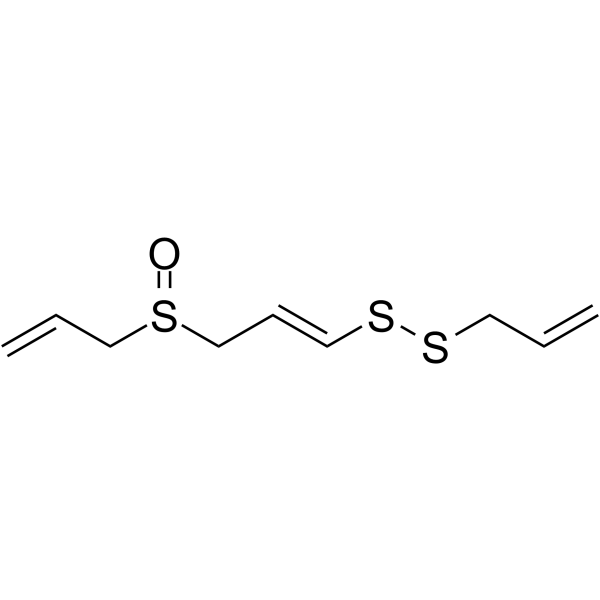
-
- HY-103358
-
|
|
P-selectin
|
Inflammation/Immunology
|
|
KF38789 is a selective inhibitor of P-selectin-PSGL-1 binding. KF38789 inhibits the binding of U937 cells to immobilized P-selectin immunoglobulin G chimeric protein (P-selectin-Ig) with an IC50 value of 1.97 μM .
|
-
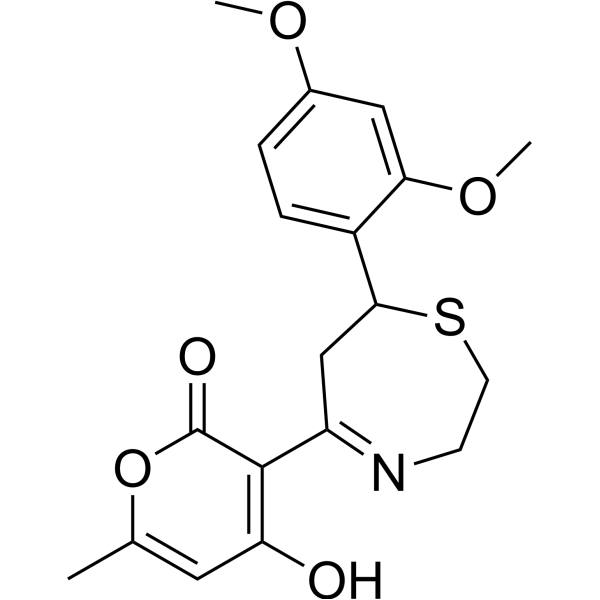
-
- HY-120268A
-
|
|
SphK
|
Inflammation/Immunology
Cancer
|
|
SLM6031434 hydrochloride is a highly selective sphingosine kinase 2 (SphK2) inhibitor with Kis of 0.4 μM, 0.5 μM, >20 μM, 22 μM for mSphK2, rSphK2, mSphK1 and rSphK1, respectively. SLM6031434 hydrochloride decrease Sphingosine 1-phosphate (S1P) levels in U937 monocytic leukemia cells. SLM6031434 hydrochloride has the potential for renal fibrosis research .
|
-
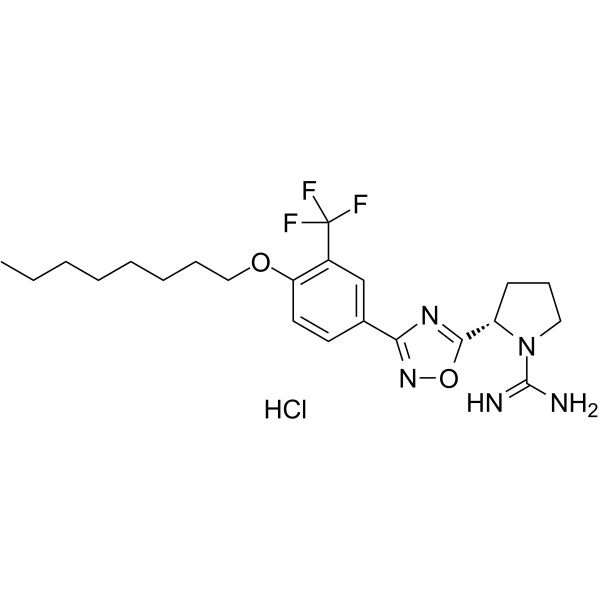
-
- HY-155245
-
|
|
CDK
Bcl-2 Family
|
Cancer
|
|
A09-003 is a CDK-9 inhibitor (IC50: 16 nM). A09-003 inhibits leukemia cell proliferation (IC50: 1.90, 0.86, 2.49, 1.84, 0.48 μM for BDCM, Molm-14, THP-1, U937, MV4-11 cells). A09-003 induces apoptosis and decreases Mcl-1 expression through Thr163 dephosphorylation .
|
-

-
- HY-100131
-
|
|
RIP kinase
|
Inflammation/Immunology
|
|
GSK481 is a highly potent, selective, and specific receptor interacting protein 1 (RIP1) kinase inhibitor with an IC50 of 1.3 nM, which inhibits Ser 166 phosphorylation in wild-type human RIP1 (IC50=2.8 nM). GSK481 also exhibits excellent translation in the U937 cellular assay with an IC50 of 10 nM .
|
-
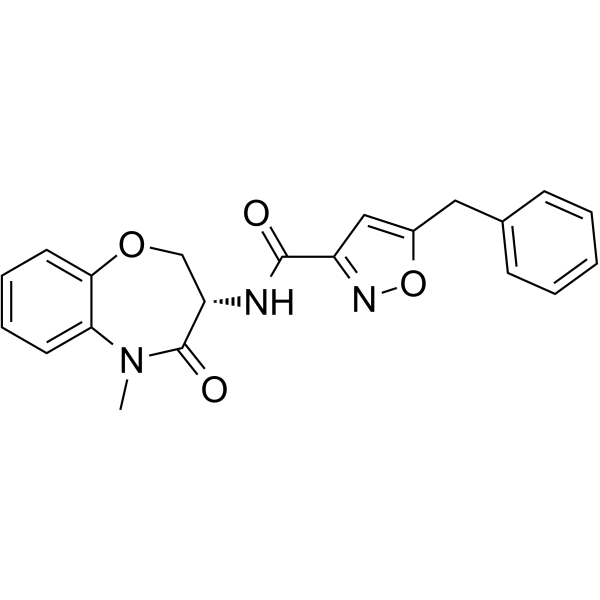
-
- HY-103347
-
|
|
Apoptosis
|
Inflammation/Immunology
|
|
M50054 is a potent inhibitor of apoptosis. M50054 inhibits Etoposide-induced caspase-3 activation of U937 cells with an IC50 of 79 μg/mL. M50054 does not directly inhibit the enzymatic activity of caspase-3. M50054 can be used for the research anti-Fas-antibody-induced hepatitis and chemotherapy-induced alopecia .
|
-
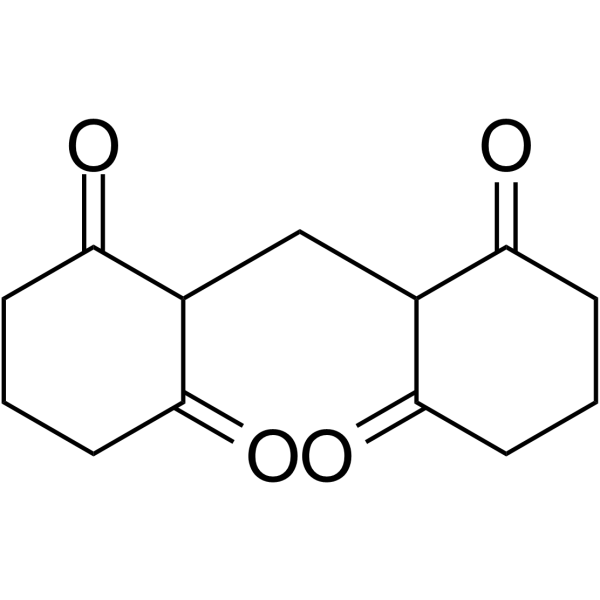
-
- HY-17372
-
|
MK 966
|
COX
|
Inflammation/Immunology
Cancer
|
|
Rofecoxib is a potent, specific and orally active COX-2 inhibitor, with IC50s of 26 and 18 nM for human COX-2 in human osteosarcoma cells and Chinese hamster ovary cells, with a 1000-fold selectivity for COX-2 over human COX-1 (IC50 > 50 μM in U937 cells and > 15 μM in Chinese hamster ovary cells).
|
-
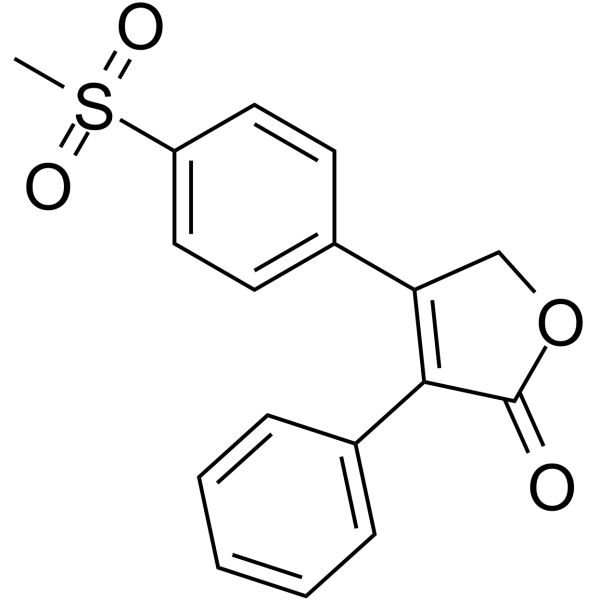
-
- HY-P1188
-
|
|
Integrin
|
Cancer
|
|
LDV-FITC, a fluorescent peptide, is a FITC-conjugated LDV peptide (HY-P2267). LDV-FITC binds to the α4β1 integrin with high affinity (Kd: 0.3 nM and 12 nM for binding to U937 cells in the presence and absence of Mn 2+ respectively). LDV-FITC can be used to detect α4β1 integrin affinity .
|
-
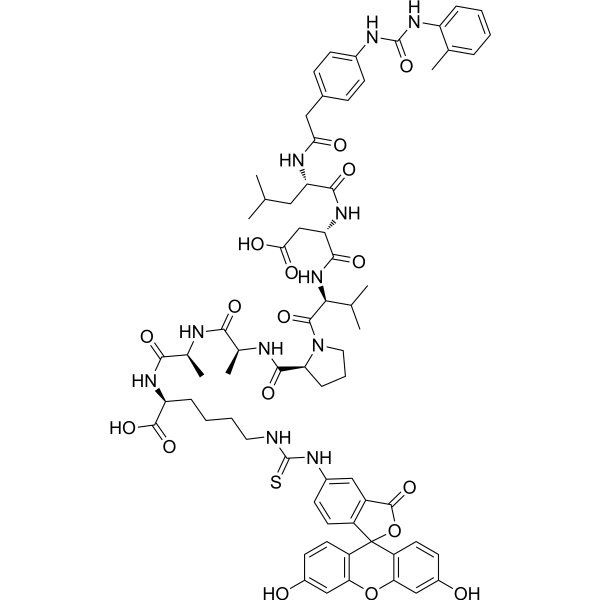
-
- HY-W025074
-
|
|
Sirtuin
Histone Methyltransferase
|
Cancer
|
|
BML-278 is a SIRT1 activator (EC150: 1 μM). BML-278 increases H3K9 methylation and inhibits H3K9 acetylation in both the paternal and maternal pronucleus. BML-278 improves early embryonic development. BML-278 arrests the cell cycle at the G1/S phase, and reduces senescence in primary human mesenchymal cells. BML-278 reduces tubulin acetylation in U937 cells. BML-278 also increases mitochondrial density in murine C2C12 myoblasts .
|
-

-
- HY-N6703
-
|
(+)-ar-Turmerone
|
Apoptosis
|
Inflammation/Immunology
Cancer
|
|
ar-Turmerone ((+)-ar-Turmerone) is a major bioactive compound of the herb Curcuma longa with anti-tumorigenesis and anti-inflammatory activities . ar-Turmerone activates apoptotic protein in human lymphoma U937 cells . ar-Turmerone exerts positive modulation on murine DCs. ar-Turmerone induces NSC proliferation and constitutes a promising therapeutic agent for various neurologic disorders .
|
-
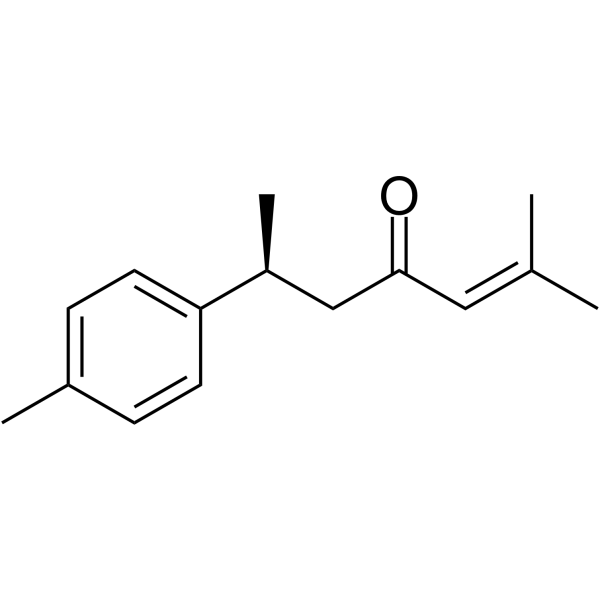
-
- HY-149302
-
|
|
Apoptosis
Autophagy
Histone Acetyltransferase
|
Cancer
|
MC4033 shows IC50s of 39.4 μM, 52.1 μM, 41 μM and 30.1 μM in HCT116, H1299, A549 and U937, respectively .
MC4033 (25, 50, 100, and 200 μM, 72 h) reduces the level of H4K16Ac in HT29 cells, suggesting its ability to inhibit KAT8 in cells .
|
-
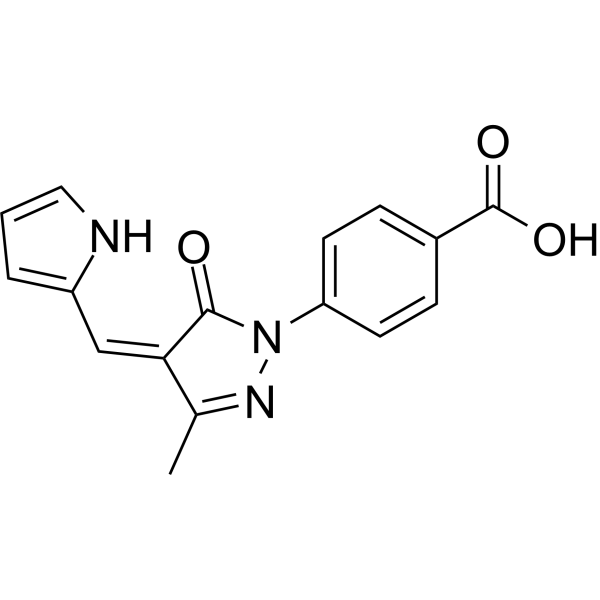
-
- HY-17372S
-
|
|
Isotope-Labeled Compounds
COX
|
Inflammation/Immunology
Cancer
|
|
Rofecoxib-d5 is the deuterium labeled Rofecoxib. Rofecoxib is a potent, specific and orally active COX-2 inhibitor, with IC50s of 26 and 18 nM for human COX-2 in human osteosarcoma cells and Chinese hamster ovary cells, with a 1000-fold selectivity for COX-2 over human COX-1 (IC50 > 50 μM in U937 cells and > 15 μM in Chinese hamster ovary cells)[1][2].
|
-

-
- HY-124007
-
|
ISAHA
|
HDAC
|
Cancer
|
|
4-Iodo-SAHA (1k) is an orally active class I and class II histone deacetylase (HDAC) inhibitor with EC50s of 1.1, 0.95, 0.12, 0.24, 0.85 and 1.3 μM for Skbr3, HT29, U937, JA16 and HL60 cell lines, respectively. 4-Iodo-SAHA (1k) can be used for the research of cancer .
|
-
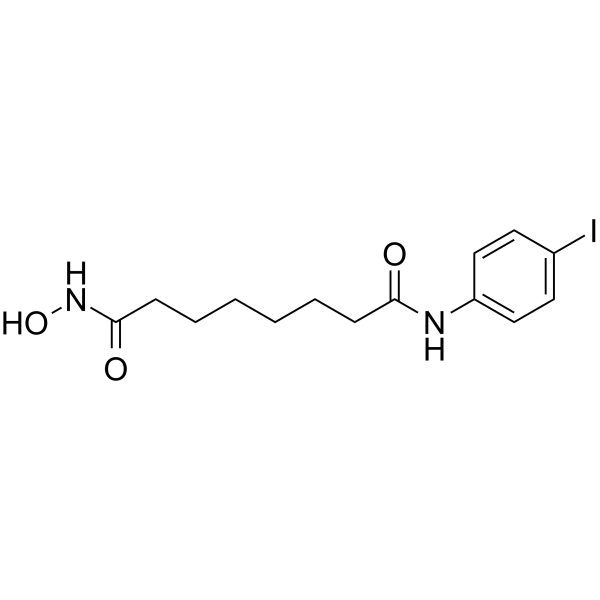
-
- HY-130502
-
|
Cholesterol beta-epoxide
|
Biochemical Assay Reagents
|
Others
|
|
Cholesterol 5beta,6beta-epoxide is an oxidative metabolite of cholesterol formed by free-radical and non-radical oxidation of cholesterol at the 5,6 double bond. Induces lactate dehydrogenase (LDH) release and apoptosis in macrophage-differentiated U937 cells. Cholesterol 5beta,6beta-epoxide has been found in human fatty streaks and advanced atherosclerotic lesions, but not in normal aortic tissue .
|
-
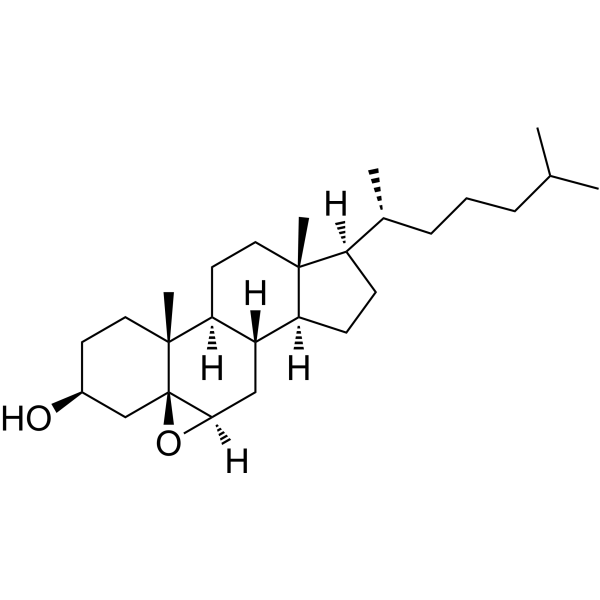
-
- HY-147086
-
|
|
Leukotriene Receptor
G protein-coupled Bile Acid Receptor 1
TNF Receptor
|
Metabolic Disease
Inflammation/Immunology
|
|
CAY10789 (compound 6) is a potent CysLT1R (cysteinyl leukotriene receptor 1) antagonist (IC50=2.80 μM) and GPBAR1 (G-protein-coupled bile acid receptor 1) agonist (EC50=3 μM). CAY10789 significantly reduces the adhesion of U937 cells to HAEC, reduces the expression of TNF-α. CAY10789 shows very promising metabolic stability and excellent pharmacokinetics. CAY10789 can be used for the research of colitis, metabolic syndromes, and other GPBAR1/CysLT1R-related diseases .
|
-
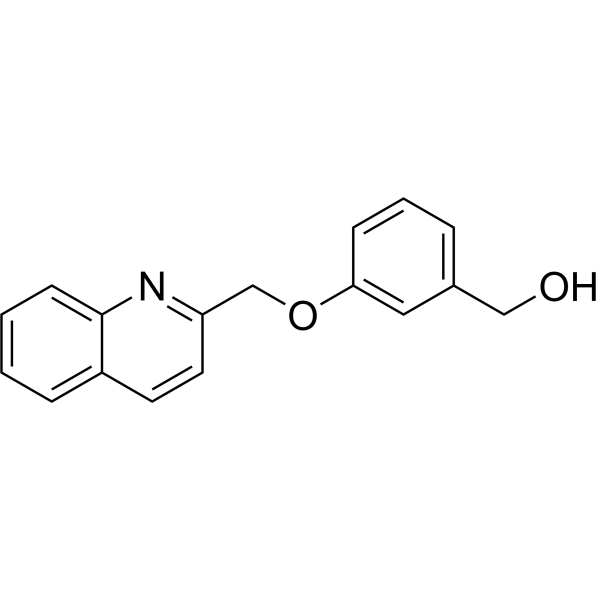
-
- HY-N6703S
-
|
(+)-ar-Turmerone-d3
|
Apoptosis
|
Inflammation/Immunology
Cancer
|
|
ar-Turmerone-d3 is the deuterium labeled ar-Turmerone. ar-Turmerone ((+)-ar-Turmerone) is a major bioactive compound of the herb Curcuma longa with anti-tumorigenesis and anti-inflammatory activities[1][2][3]. ar-Turmerone activates apoptotic protein in human lymphoma U937 cells[3]. ar-Turmerone exerts positive modulation on murine DCs. ar-Turmerone induces NSC proliferation and constitutes a promising therapeutic agent for various neurologic disorders[4][5].
|
-

-
- HY-B0660
-
|
EPA; Timnodonic acid
|
Endogenous Metabolite
Histone Demethylase
|
Neurological Disease
Cancer
|
|
Eicosapentaenoic Acid (EPA) is an orally active Omega-3 long-chain polyunsaturated fatty acid (ω-3 LC-PUFA). Eicosapentaenoic Acid exhibits a DNA demethylating action that promotes the re-expression of the tumor suppressor gene CCAAT/enhancer-binding protein δ (C/EBPδ). Eicosapentaenoic Acid activates RAS/ERK/C/EBPβ pathway through H-Ras intron 1 CpG island demethylation in U937 leukemia cells. Eicosapentaenoic Acid can promote relaxation of vascular smooth muscle cells and vasodilation .
|
-

-
- HY-W011269
-
|
EPA sodium; Timnodonic acid sodium
|
Endogenous Metabolite
Histone Demethylase
|
Cardiovascular Disease
Metabolic Disease
|
|
Eicosapentaenoic Acid (EPA)sodium is an orally active Omega-3 long-chain polyunsaturated fatty acid (ω-3 LC-PUFA). Eicosapentaenoic Acid sodium exhibits a DNA demethylating action that promotes the re-expression of the tumor suppressor gene CCAAT/enhancer-binding protein δ (C/EBPδ). Eicosapentaenoic Acid sodium activates RAS/ERK/C/EBPβ pathway through H-Ras intron 1 CpG island demethylation in U937 leukemia cells. Eicosapentaenoic Acid sodium can promote relaxation of vascular smooth muscle cells and vasodilation .
|
-

-
- HY-131249
-
|
|
MAPKAPK2 (MK2)
|
Inflammation/Immunology
|
|
MK2-IN-3 is a potent and selective inhibitor of MAPKAP-K2 (MK-2), with an IC50 of 8.5 nM. MK2-IN-3 shows selectivity for MK-2 over MK-3, MK-5, ERK2, MNK1, p38a (IC50s=0.21, 0.081, 3.44, 5.7, and >100 μM, respectively) and MSK1, MSK2, CDK2, JNK2, IKK2 (IC50s>200 μM). MK2-IN-3 can reduce TNFα production in both U937 cells and in vivo .
|
-
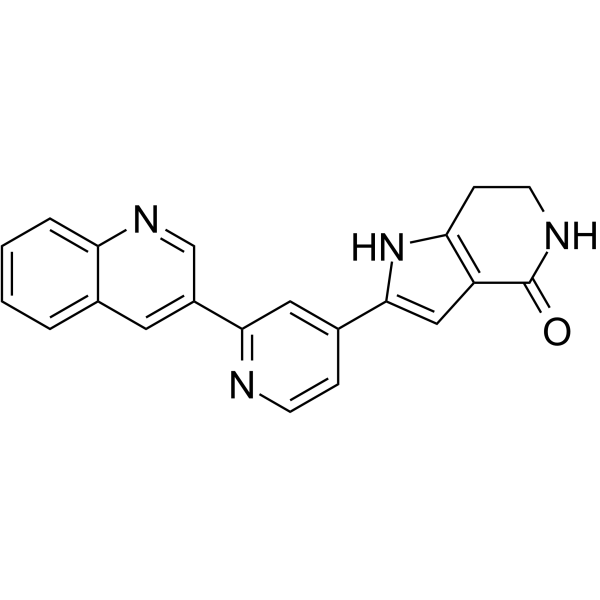
-
- HY-155804
-
|
|
Necroptosis
RIP kinase
|
Inflammation/Immunology
|
|
RIP1 kinase inhibitor 8 (Compound 77) is a potent and highly selective dihydropyrazole (DHP) RIP1 kinase inhibitor with an IC50 of 20 nM. RIP1 kinase inhibitor 8 prevents necrotic cell death. RIP1 kinase inhibitor 8 shows a favorable pharmacokinetic profile in multiple species .
|
-

-
- HY-157042
-
|
|
MAGL
|
Inflammation/Immunology
Cancer
|
|
MAGL-IN-11 (compound 29) is a selective and reversible MAGL inhibitor. MAGL-IN-11 has the potential to study inflammation, cancer and antioxidants .
|
-
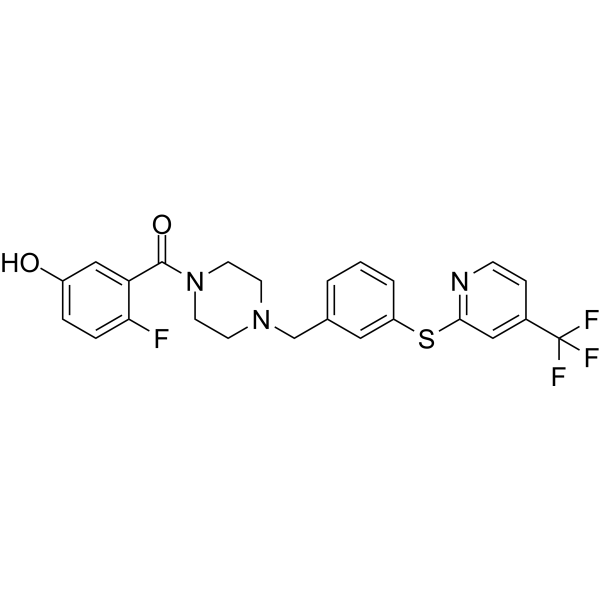
-
- HY-157040
-
-
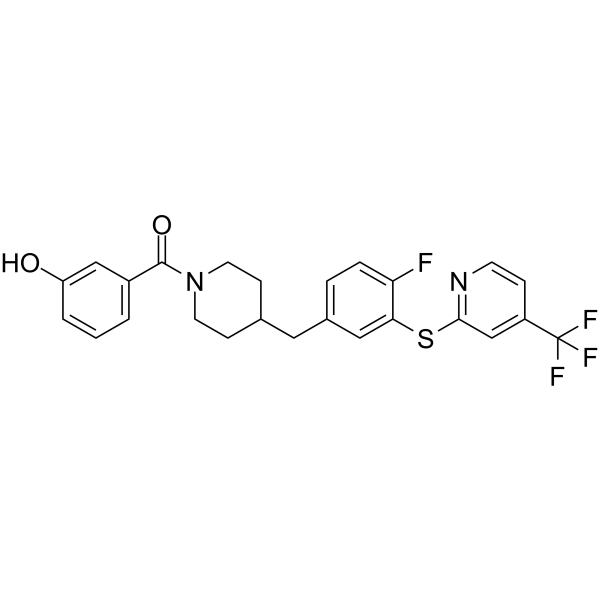
-
- HY-126294
-
|
AZD4604; JAK1-IN-7
|
JAK
|
Inflammation/Immunology
|
|
Londamocitinib (AZD4604) is a potent and selective JAK1 inhibitor with IC50 at 0.54 nM. Londamocitinib has anti-inflammatory activity .
|
-
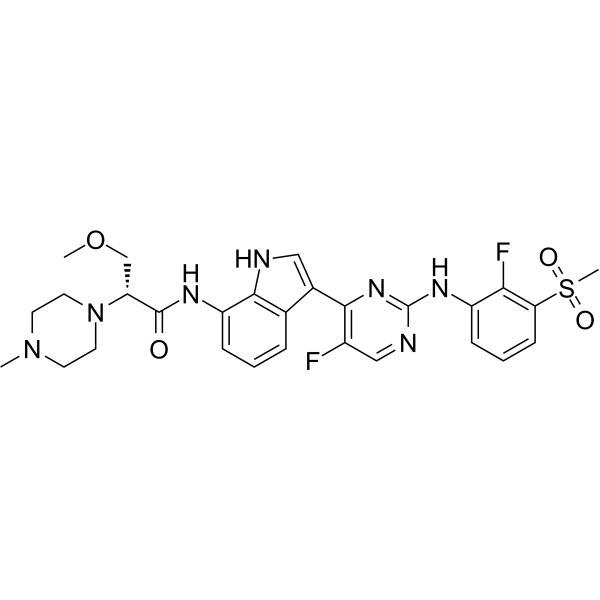
-
- HY-N0732
-
|
|
Apoptosis
|
Cancer
|
|
Jolkinolide B, a bioactive diterpene isolated from the roots of Euphorbia fischeriana Steud, is known to induce apoptosis in cancer cells .
|
-
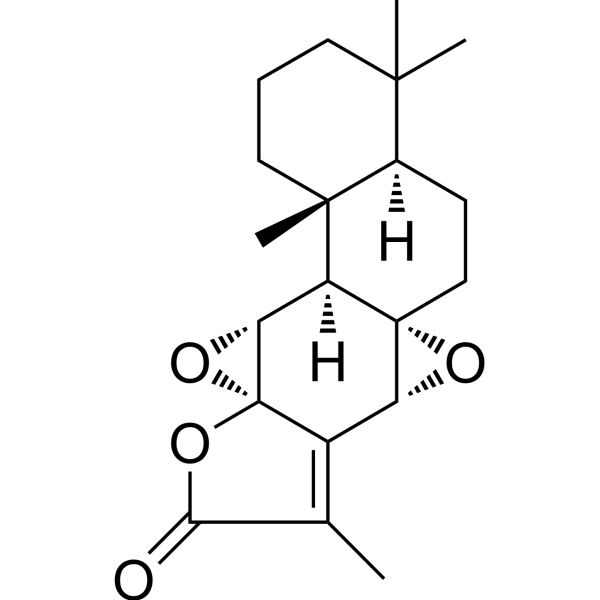
-
- HY-153768
-
|
|
Histone Acetyltransferase
|
Cancer
|
|
KAT modulator-1 (Compound 3) is a KAT modulator. KAT modulator-1 can interact with p300 full-length but not with the catalytic domain. KAT modulator-1 can be used for epigenetics research .
|
-
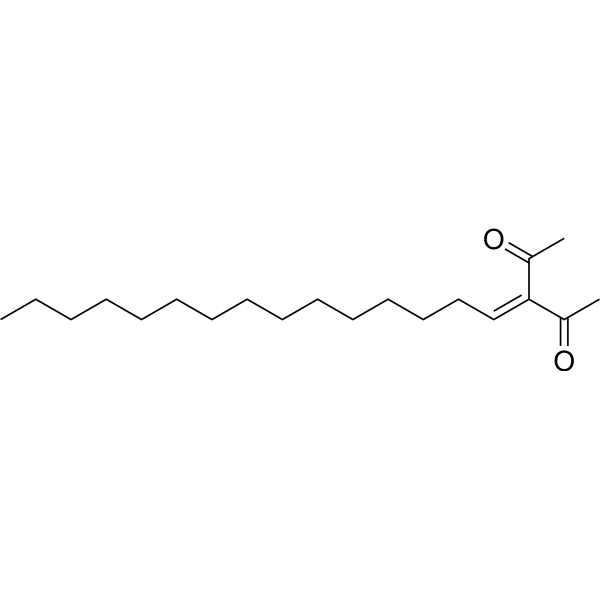
-
- HY-113221
-
-
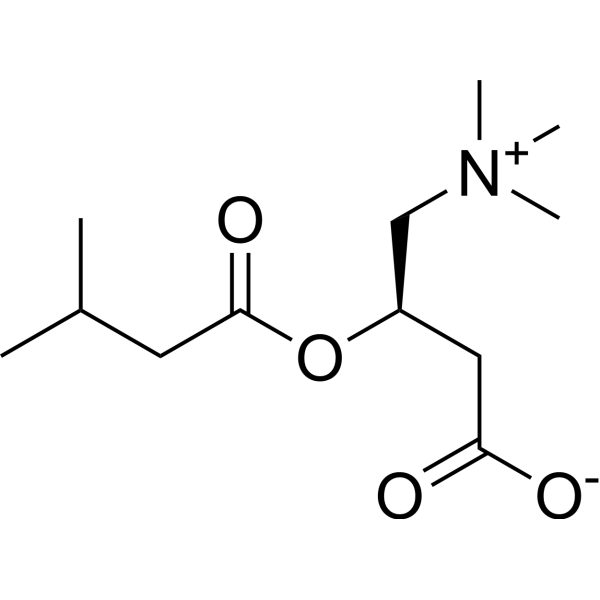
-
- HY-P5288
-
|
|
Antibiotic
|
Infection
Cancer
|
|
BMAP-28 is an antibiotic peptide and an inducer of the mitochondrial permeability transition pore. BMAP-28 induces cell death through opening of the mitochondrial permeability transition pore. BMAP-28 can be used in study of microbial infections and cancer .
|
-
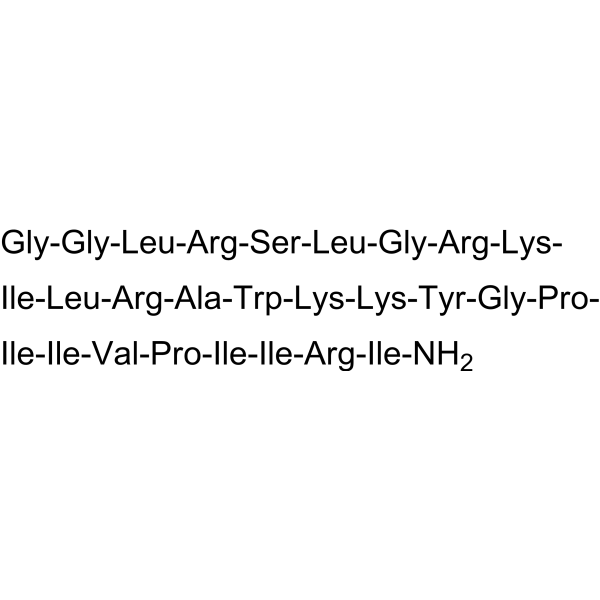
-
- HY-P5020
-
|
|
Bacterial
|
Infection
Cancer
|
|
Crotalicidin is an antimicrobial peptide and anti-tumor peptide that can effectively inhibit the activity of Gram-negative bacteria and tumor cells. Crotalicidin can be obtained from rattlesnake venom. Crotalicidin can be used in the study of microbial infections and cancer .
|
-
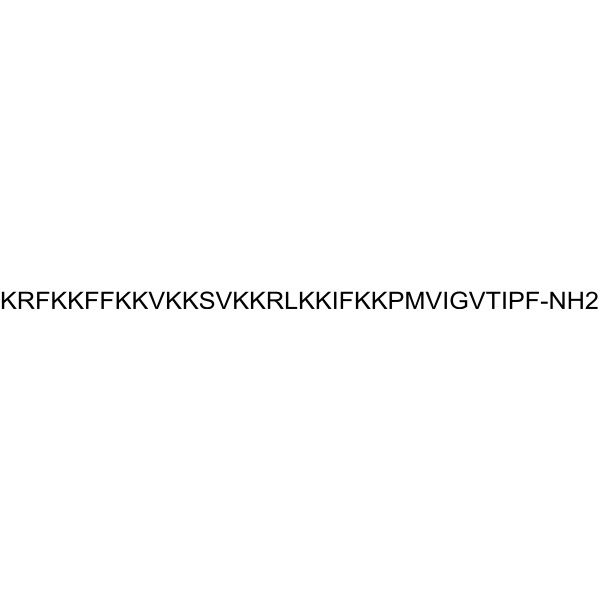
-
- HY-135664
-
-

-
- HY-106216
-
|
|
Elastase
|
Infection
Inflammation/Immunology
|
|
Tiprelestat is a potent human neutrophil elastase inhibitor. Tiprelestat has antimicrobial and anti-inflammatory activities. Tiprelestat can be used in the research of inflammation/immune disease .
|
-

-
- HY-153886
-
|
|
FLT3
AMPK
Apoptosis
|
Cancer
|
|
Wu-5 is a USP10 inhibitor that can inhibit FLT3 and AMPK pathways, induce FLT3-ITD degradation and induce apoptosis .
|
-
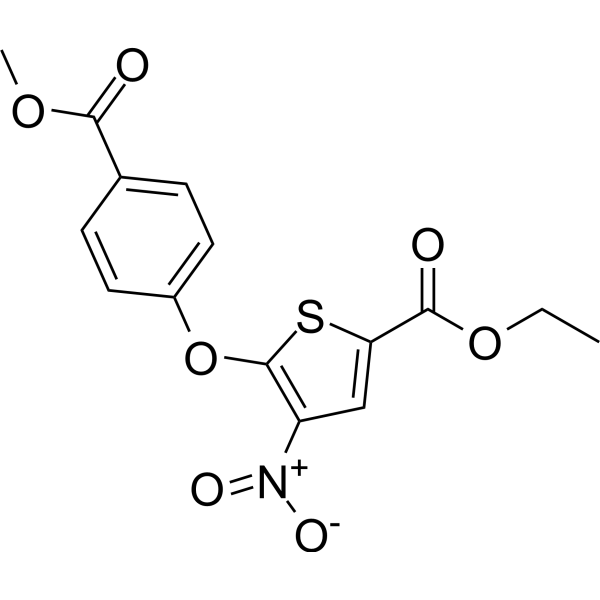
-
- HY-N4252
-
|
|
Others
|
Cancer
|
|
Periplocymarin, a cardiac glycoside isolated from Periploca sepium and Periploca graeca, is a potential anti-cancer compound .
|
-
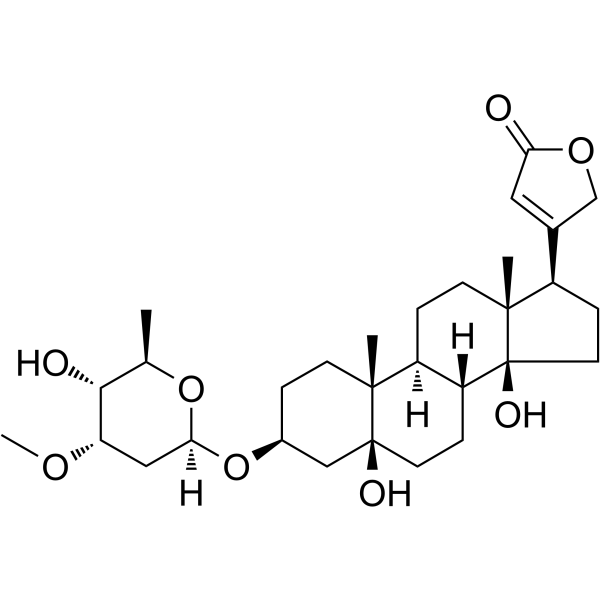
-
- HY-146584
-
|
|
Cathepsin
|
Inflammation/Immunology
|
|
Cathepsin C-IN-5 (compound SF38) is a potent, selective and orally active Cathepsin C inhibitor with IC50s of 59.9 nM, 4.26 µM, >5 µM, >5 µM, >5 µM for Cat C, Cat L, Cat S, Cat B, Cat K, respectively. Cathepsin C-IN-5 inhibits the Cat C activity in bone marrow and blood. Cathepsin C-IN-5 decreases the activation of NSPs (neutrophil serine proteases). Cathepsin C-IN-5 shows anti-inflammatory activity .
|
-

-
- HY-150513
-
|
|
SphK
|
Cancer
|
|
SLP9101555 (compound 14c) is a potent and selective SphK2 (sphingosine kinase 2) inhibitor (Ki=90 nM) with 200-fold selectivity over SphK1. SLP9101555 markedly decreases extracellular S1P (sphingosine 1-phosphate) levels .
|
-
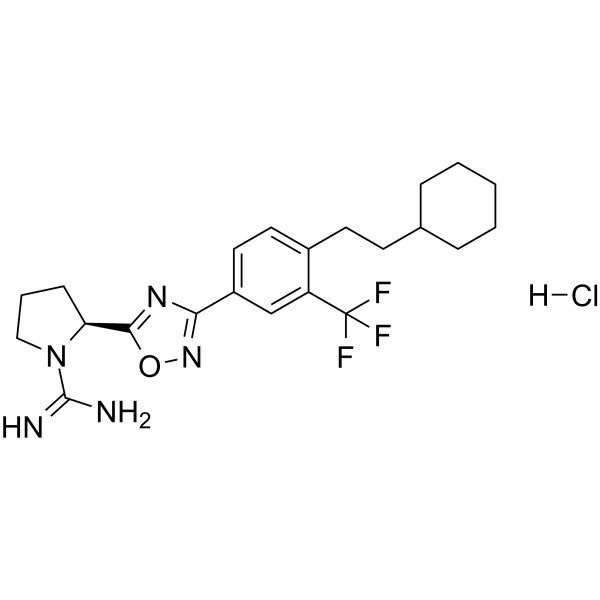
-
- HY-151560
-
|
|
Dihydroorotate Dehydrogenase
|
Cancer
|
|
hDHODH-IN-11 is a potent human dihydroorotate dehydrogenase (hDHODH) inhibitor with an IC50 value of 7.2 nM. hDHODH-IN-11 has low cytotoxicity. hDHODH-IN-11 can be used in research of acute myeloid leukemia (AML) .
|
-
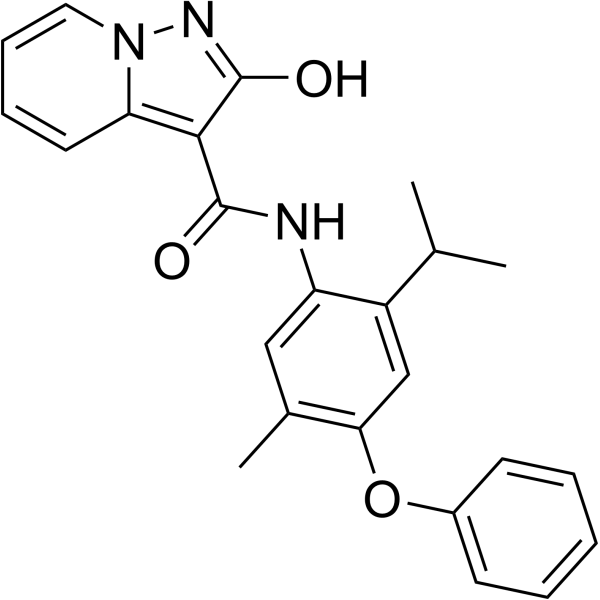
-
- HY-138617
-
|
|
Others
|
Cancer
|
|
AI-10-47 is a small molecule inhibitor of CBFβ-RUNX binding, with an IC50 of 3.2 μM .
|
-

-
- HY-153112
-
-
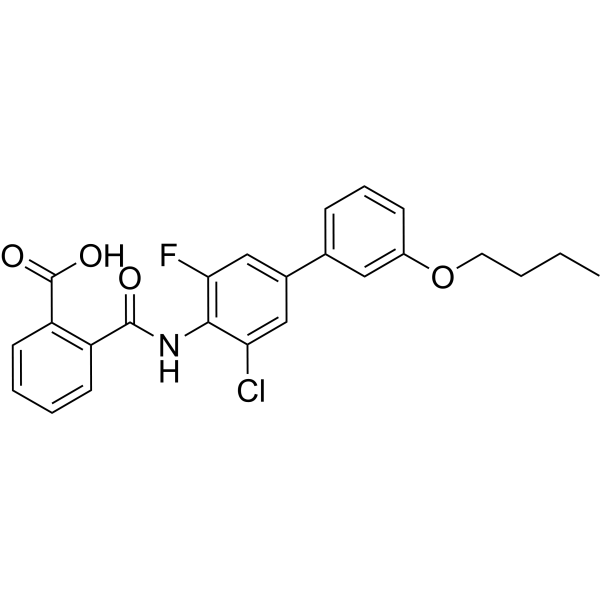
-
- HY-156694
-
|
|
Apoptosis
|
Cancer
|
|
Hydroxy-PP-Me is a potent and specific CBR1 inhibitor with an IC50 of 759 nM. Hydroxy-PP-Me inhibits serum-withdrawal-induced apoptosis. Hydroxy-PP-Me increases As2O3-induced apoptotic cell death compared with As2O3 alone .
|
-
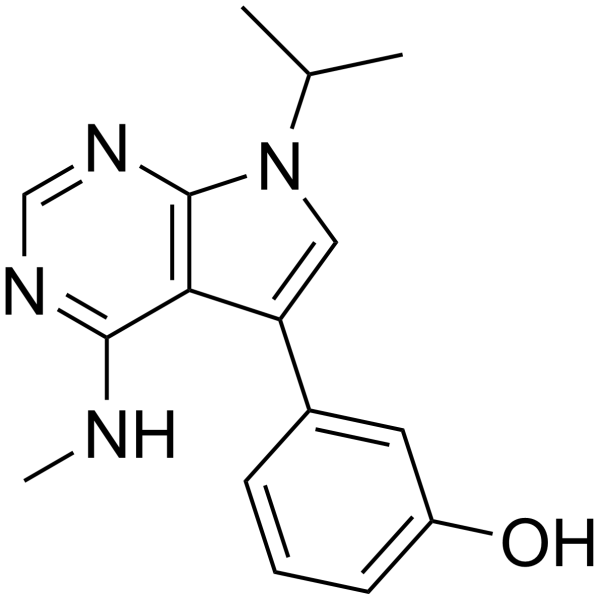
-
- HY-12336
-
NIBR189
1 Publications Verification
|
EBV
EBI2/GPR183
|
Inflammation/Immunology
|
|
NIBR189 is an EBI2 (Epstein-Barr virus-induced gene 2) antagonist. NIBR189 inhibits human and mouse EBI2 with IC50s of 11 and 16 nM, respectively. NIBR189 can be used for the research of autoimmune diseases .
|
-

-
- HY-143900
-
|
|
Btk
Apoptosis
|
Inflammation/Immunology
Cancer
|
|
BTK-IN-7 is a potent and selective inhibitor of BTK (IC50=4.0 nM). BTK-IN-7 has high selectivity in both enzymatic (ITK >250-fold, EGFR >2500-fold) and cellular levels (ITK >227-fold, EGFR 27-fold). BTK-IN-7 also has potent antitumor activity .
|
-
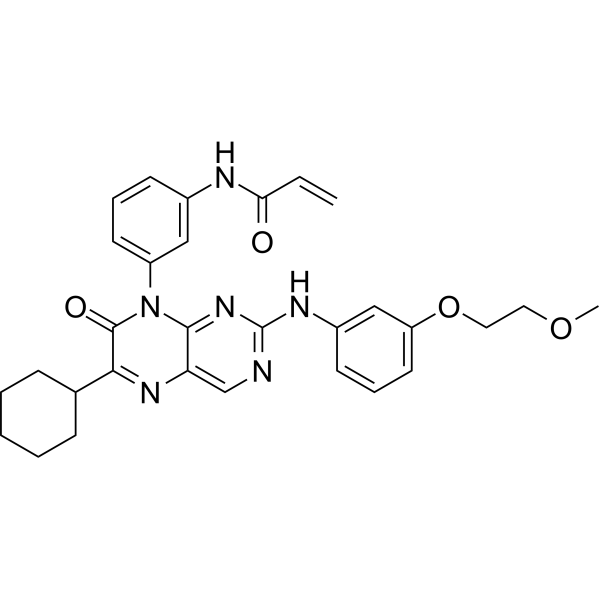
-
- HY-116392D
-
|
|
Glucosylceramide Synthase (GCS)
Apoptosis
|
Cancer
|
|
PDMP hydrochloride is a glucosylceramide synthase (GCS) inhibitor. PDMP hydrochloride induces apoptosis in K562/A02 cells. PDMP hydrochloride can be used in cancer (such as leukemia) research .
|
-

- HY-13680
-
|
Dian III; N-Methylisoindigotin; Natura-α
|
Apoptosis
|
Cancer
|
|
Meisoindigo (Dian III), a derivative of Indirubin (HY-N0117), halts the cell cycle at the G0/G1 phase and induces apoptosis in primary acute myeloid leukemia (AML) cells. Meisoindigo exhibits high antitumor activity .
|
-
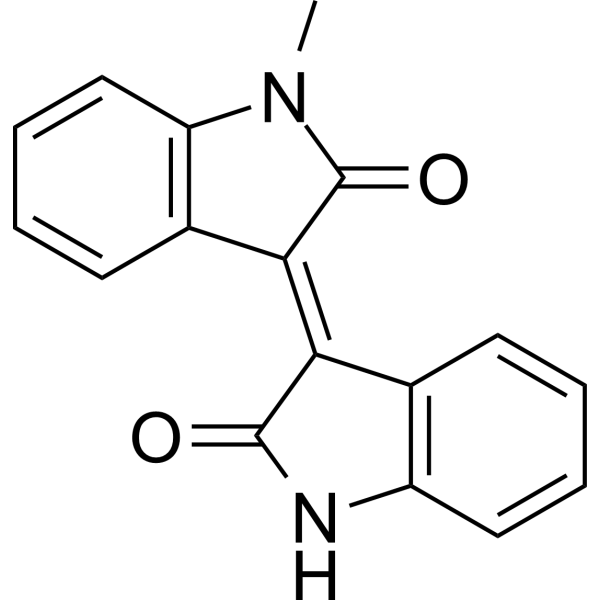
- HY-117937
-
BC-1215
1 Publications Verification
|
Ligands for E3 Ligase
|
Inflammation/Immunology
|
|
BC-1215 is a F-box protein 3 (Fbxo3) inhibitor. BC-1215 works by antagonizing of Fbxo3 on TRAF cytokine signaling and exhibits a low IC50 in vitro. BC-1215 can be used for the research of inflammation .
|
-
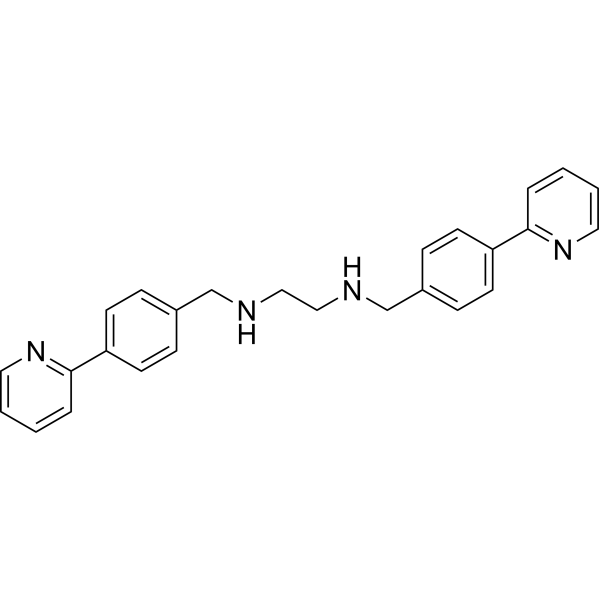
- HY-111449
-
|
AHR antagonist 1
|
Aryl Hydrocarbon Receptor
|
Inflammation/Immunology
Cancer
|
|
BAY-218 (AHR antagonist 1) is an aryl hydrocarbon receptor (AHR) antagonist. BAY-218 has AHR inhibitory activity with an IC50 of 39.9 nM in in U87 glioblastoma cells. BAY-218 can be used for the research of cancer or conditions with dysregulated immune responses .
|
-
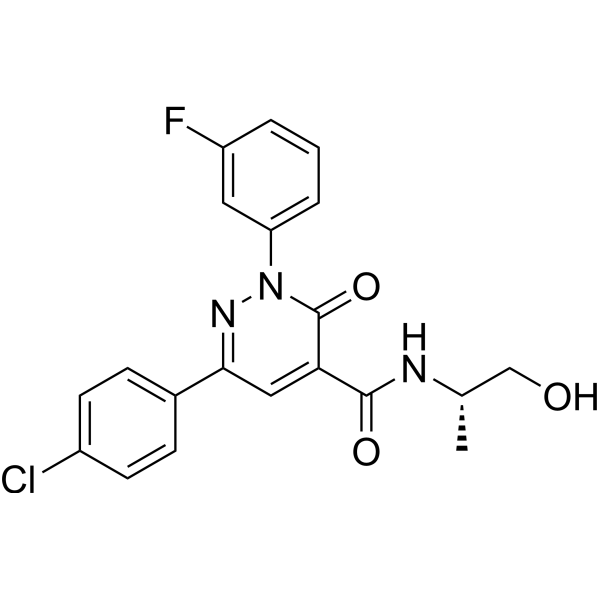
- HY-150688
-
|
|
JNK
|
Cancer
|
|
JAK3-IN-13 is a potent, selective and orally active JAK3 inhibitor with IC50 values of 4728, 2039, 8, 365 nM for NK1, JNK2, JNK3, Tyk2, respectively. JAK3-IN-13 shows antiproliferative activity. JAK3-IN-13 induces cell cycle arrest at G0/G1 phase. JAK3-IN-13 shows antitumor activity .
|
-

- HY-144755
-
|
|
Histone Demethylase
|
Cancer
|
|
MC2652 (compound 1a) is a potent LSD1 inhibitor. MC2652 displays high inhibiting effects in MV4-11 and NB4 leukaemia cells. MC2652 shows antiproliferative activity against prostate cancer LNCaP cells .
|
-
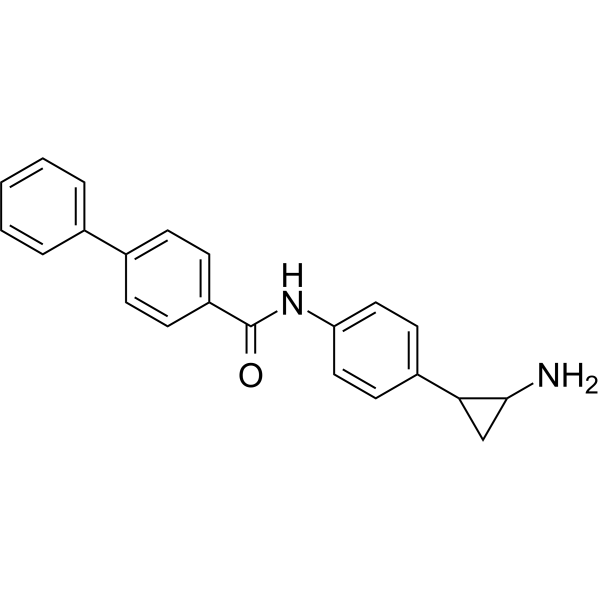
- HY-144756
-
|
|
Histone Demethylase
Monoamine Oxidase
|
Cancer
|
|
LSD1-IN-15 (compound 1b) is a potent LSD1 inhibitor. LSD1-IN-15 can inhibit LSD1-CoREST, MAO-A and MAO-B, with IC50 values of 0.149, 0.028, and 0.327 μM, respectively. LSD1-IN-15 displays cell growth arrest in prostate cancer LNCaP cells, with an IC50 of 9.9 μM .
|
-
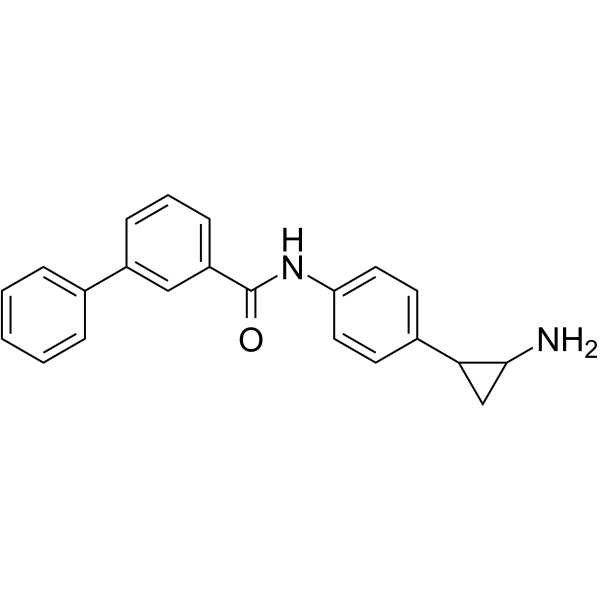
- HY-144757
-
|
|
Histone Demethylase
Monoamine Oxidase
|
Cancer
|
|
LSD1-IN-16 (compound 4b) is a potent LSD1 inhibitor. LSD1-IN-16 can inhibit LSD1-CoREST, MAO-A and MAO-B, with IC50 values of 0.015, 0.024, and 0.366 μM, respectively. LSD1-IN-16 displays cell growth arrest in prostate cancer LNCaP cells, with an IC50 of 15.2 μM .
|
-
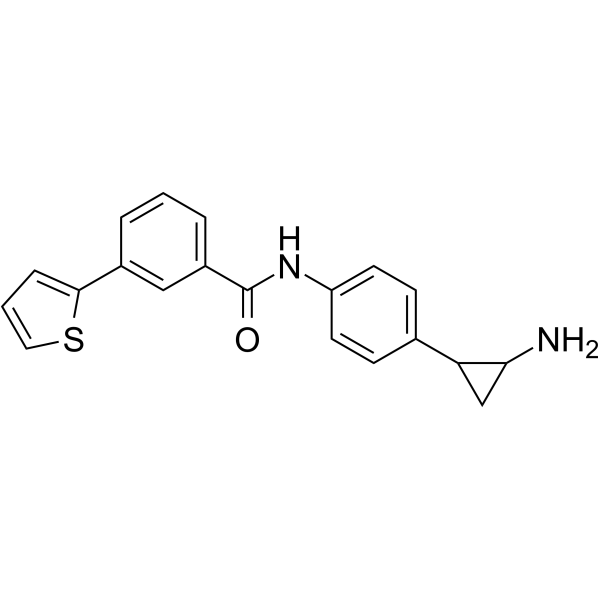
- HY-144758
-
|
|
Histone Demethylase
Monoamine Oxidase
|
Cancer
|
|
LSD1-IN-17 (compound 5b) is a potent LSD1 inhibitor. LSD1-IN-17 can inhibit LSD1-CoREST, MAO-A and MAO-B, with IC50 values of 0.005, 0.028, and 0.820 μM, respectively. LSD1-IN-17 displays cell growth arrest in prostate cancer LNCaP cells, with an IC50 of 17.2 μM .
|
-
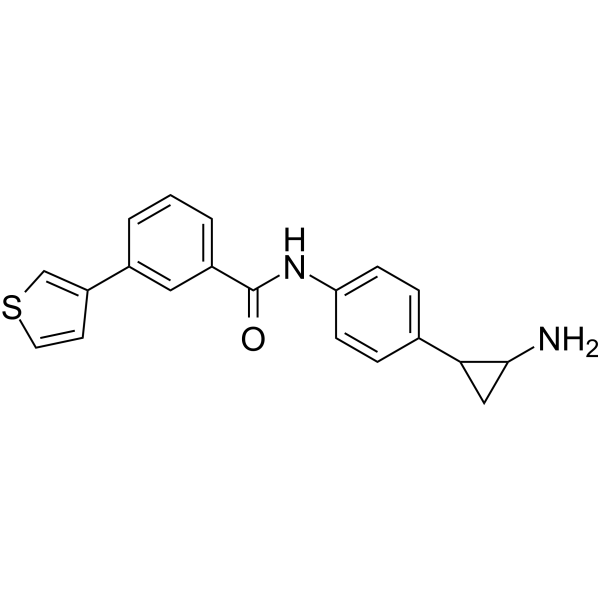
- HY-12764
-
6-OAU
1 Publications Verification
GTPL5846
|
GPR84
ERK
Bacterial
Antibiotic
|
Inflammation/Immunology
|
|
6-OAU (GTPL5846) (6-n-octylaminouracil) is an GPR84 (G protein-coupled receptor 84) agonist, with an EC50 value of 105 nM. 6-OAU works as a chemoattractant to both PMNs and macrophages, and amplifies the proinflammatory cytokine IL-8, shows proinflammatory function. 6-OAU also displays anti-bacterial function .
|
-

| Cat. No. |
Product Name |
Type |
-
- HY-130502
-
|
Cholesterol beta-epoxide
|
Biochemical Assay Reagents
|
|
Cholesterol 5beta,6beta-epoxide is an oxidative metabolite of cholesterol formed by free-radical and non-radical oxidation of cholesterol at the 5,6 double bond. Induces lactate dehydrogenase (LDH) release and apoptosis in macrophage-differentiated U937 cells. Cholesterol 5beta,6beta-epoxide has been found in human fatty streaks and advanced atherosclerotic lesions, but not in normal aortic tissue .
|
| Cat. No. |
Product Name |
Target |
Research Area |
-
- HY-P1188
-
|
|
Integrin
|
Cancer
|
|
LDV-FITC, a fluorescent peptide, is a FITC-conjugated LDV peptide (HY-P2267). LDV-FITC binds to the α4β1 integrin with high affinity (Kd: 0.3 nM and 12 nM for binding to U937 cells in the presence and absence of Mn 2+ respectively). LDV-FITC can be used to detect α4β1 integrin affinity .
|
-
- HY-P5288
-
|
|
Antibiotic
|
Infection
Cancer
|
|
BMAP-28 is an antibiotic peptide and an inducer of the mitochondrial permeability transition pore. BMAP-28 induces cell death through opening of the mitochondrial permeability transition pore. BMAP-28 can be used in study of microbial infections and cancer .
|
-
- HY-P5020
-
|
|
Bacterial
|
Infection
Cancer
|
|
Crotalicidin is an antimicrobial peptide and anti-tumor peptide that can effectively inhibit the activity of Gram-negative bacteria and tumor cells. Crotalicidin can be obtained from rattlesnake venom. Crotalicidin can be used in the study of microbial infections and cancer .
|
-
- HY-106216
-
|
|
Elastase
|
Infection
Inflammation/Immunology
|
|
Tiprelestat is a potent human neutrophil elastase inhibitor. Tiprelestat has antimicrobial and anti-inflammatory activities. Tiprelestat can be used in the research of inflammation/immune disease .
|
| Cat. No. |
Product Name |
Category |
Target |
Chemical Structure |
| Cat. No. |
Product Name |
Chemical Structure |
-
- HY-17372S
-
|
|
|
Rofecoxib-d5 is the deuterium labeled Rofecoxib. Rofecoxib is a potent, specific and orally active COX-2 inhibitor, with IC50s of 26 and 18 nM for human COX-2 in human osteosarcoma cells and Chinese hamster ovary cells, with a 1000-fold selectivity for COX-2 over human COX-1 (IC50 > 50 μM in U937 cells and > 15 μM in Chinese hamster ovary cells)[1][2].
|
-

-
- HY-N6703S
-
|
|
|
ar-Turmerone-d3 is the deuterium labeled ar-Turmerone. ar-Turmerone ((+)-ar-Turmerone) is a major bioactive compound of the herb Curcuma longa with anti-tumorigenesis and anti-inflammatory activities[1][2][3]. ar-Turmerone activates apoptotic protein in human lymphoma U937 cells[3]. ar-Turmerone exerts positive modulation on murine DCs. ar-Turmerone induces NSC proliferation and constitutes a promising therapeutic agent for various neurologic disorders[4][5].
|
-

Your information is safe with us. * Required Fields.
Inquiry Information
- Product Name:
- Cat. No.:
- Quantity:
- MCE Japan Authorized Agent:



































































